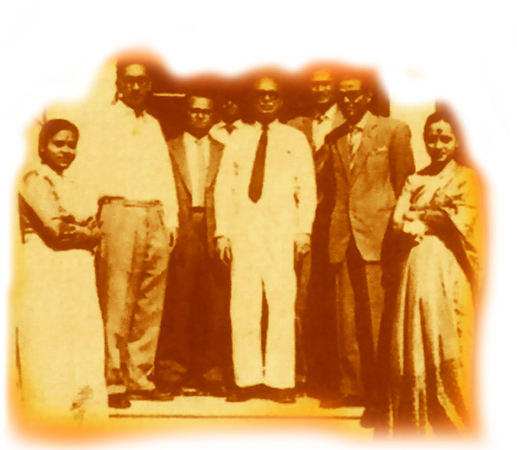Bank of Baroda

First Bank of Baroda branch in Mombasa, Kenya on 14th December 1953. Image credit: KBA

Image credit: Kenya Banking Association
There is a region in Gujarat, India called Vadodara. It used to go by the name Baroda. In this region, the Maharaja of Baroda began the Bank of Baroda whose 68-year legacy and name live on to date.
The bank set its sights on its first overseas branch in Mombasa, Kenya to follow its predecessors in Calcutta and Delhi, India. The migration of Indians, mainly from the Gujarat area, to Kenya created an urgent need for a bank that could serve clients in both India and Kenya.
On 4th December 1953, the Bank of Baroda set up its flagship outfit in Kenya on Makadara Road in Mombasa. The bank grew from the natural need for remittances between Kenya and India. Accommodating clients with thriving businesses in both Kenya and India was another source of growth for Baroda. Within the span of a year, the bank had set up another branch in Nairobi. On 3rd October 1959, another branch found its home on Digo Road in Mombasa. The branches on Makadara and Digo Roads were merged in 2002.
An Asian Bank in a European Market
Baroda found a fierce competitor in the Bank of India. The banks were of similar sizes and both had a predominantly Asian client base. Even so, beyond forming an identity to differentiate itself from the Bank of India, Baroda also had to reckon with competition from European banks. This unique challenge came about because the majority of mainstream banks in Kenya at the time were European. Banking remained the lofty reserve of European people. As an outlying Asian Bank, Baroda dealt with the difficult task of building trust within a European market.
Baroda’s Winning Strategy
Baroda had a very simple strategy to distinguish itself from other banks in Kenya. Accessibility. While European banks relied on formality and were largely out of reach for the general population, Baroda aimed to be approachable to the average person.
In its arsenal of weapons, Baroda had another tool that would propel it to success. Savings accounts. Although largely unknown then, the bank offered the option to save a fixed amount regularly for interest. This service became incredibly sought after and pushed Baroda beyond the status of a typical bank.
After independence in 1963, Kenya became a more fertile ground for development as Kenyan citizens sought out economic opportunities. As a result, Kenyans needed banks that could accommodate this growth. In response to these rapid changes, Bank of Baroda became Bank of Baroda (Kenya) Limited. This subsidiary focused its efforts on serving the general Kenyan populace. As Kenya developed in sectors such as health and education, so too did the bank that aimed to serve them.
The Ingenious ‘Bank on Wheels’ Invention
The bank soon became aware of the lack of services in business hubs such as Kisumu and Eldoret. These areas were isolated from bank services due to fragmented communication lines and inadequate infrastructure in the 1960s. To address this issue, the Bank of Baroda introduced the ingenious innovation known as ‘Bank on Wheels’, or mobile banking. This service allowed staff members to travel to secluded areas and provide mobile banking services. Staff would then return money to Nairobi. The trial run in Kisumu became wildly popular and the ‘banking on wheels’ practice migrated swiftly to India.
Promotion of Women at Baroda
The Bank of Baroda is an institution that has been sensitive to the plight of women and in particular, their exclusion from the workplace. The bank acknowledged the importance of definite hours to allow women who cared for families to work within reasonable hours. The bank’s focus shifted to adequate financial compensation for women. Baroda encouraged women employees to gain educational qualifications and build skills so that they could occupy more senior positions at Baroda. As of 2013, the bank of Baroda reported at least a 34% representation of women among its staff.
The bank had other successes concerning the involvement of women. Vindhya Vittal Ramesh rose to the heights of CEO of Bank of Baroda after the bank had been primarily led by men. Bank of Baroda also opened an all-female branch based in the sunny coastal town of Nyali, Mombasa. The staff were predominantly women and the products offered suited to women customers. The branch still stands today on Nyali Road.
The Bank of Baroda is a dynamic and innovative contributor to Kenya’s banking history. From the inception of ‘banking on wheels’ to the cultivation of savings accounts and the emphasis on the inclusion of women, this bank has continuously sought to establish and separate itself from the pack. This insatiable search for innovation and progression has made Baroda a mainstay in Kenyan banking to date.



